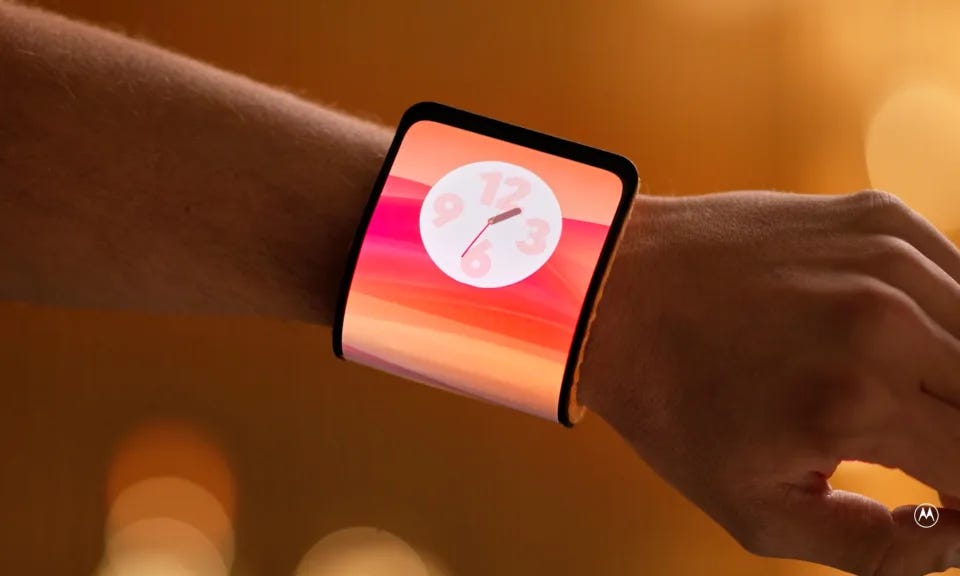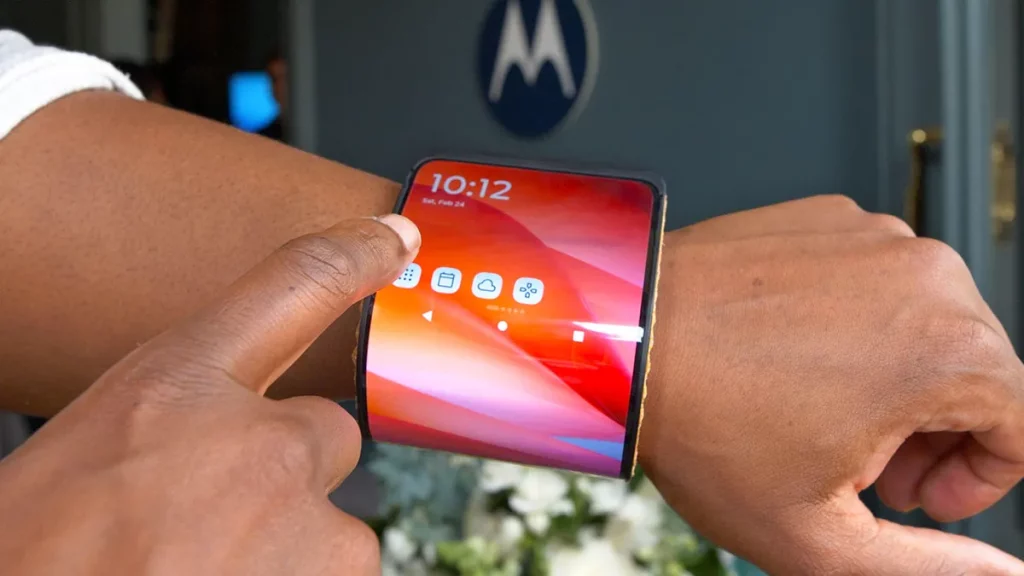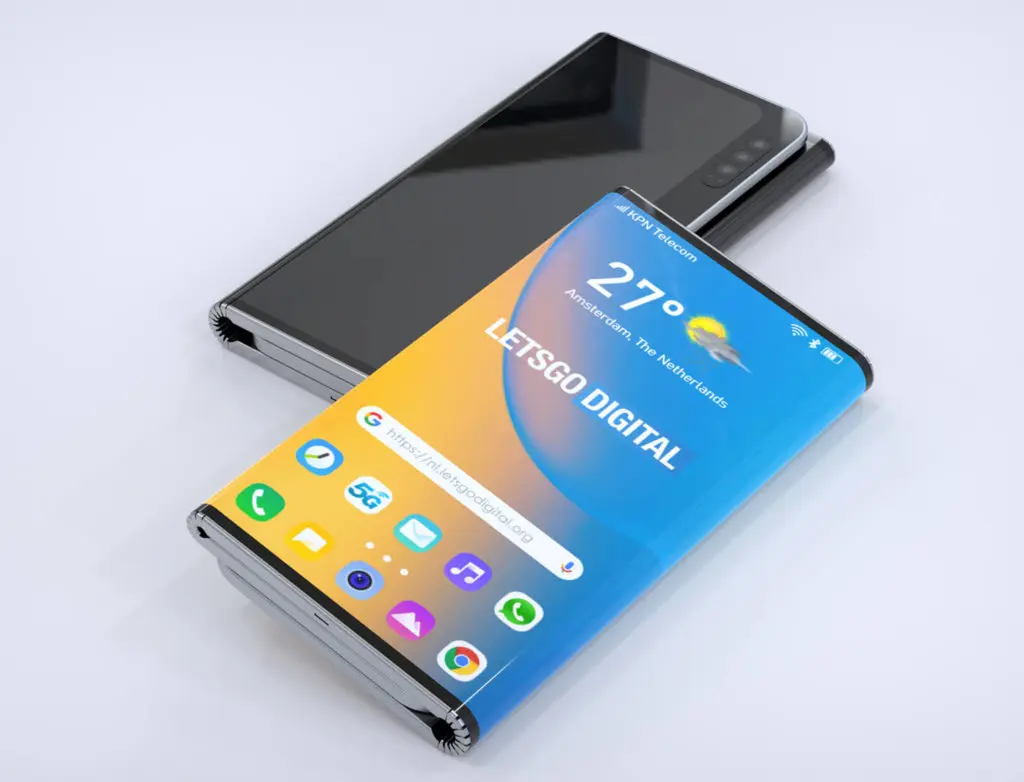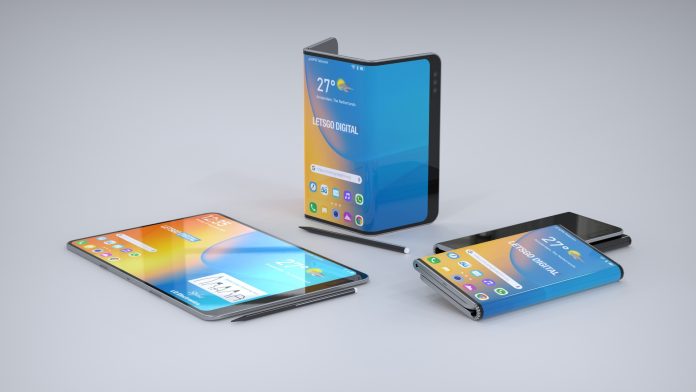In this article, we will delve into the exciting world of rollable phone innovations and explore the latest trends in mobile technology. Get ready to witness the evolution of smartphones as they become more flexible and dynamic.
Key Takeaways:
- Rollable phones are revolutionizing the mobile industry with their flexible design.
- The advancements in rollable phone technology offer unique features and benefits.
- Major players in the market are pushing the boundaries of rollable phone innovation.
- Consumer adoption and market trends are driving the demand for rollable phones.
- Rollable phones have the potential to reshape smartphone design and the entire mobile industry.
A Brief History of Rollable Phones
To understand the significance of rollable phones, let’s take a trip down memory lane and explore their fascinating history. The concept of a rollable phone has been a dream for tech enthusiasts for decades, and its journey to reality has been filled with various milestones and breakthroughs.
The Early Prototypes
The idea of a phone that could expand and contract like a scroll isn’t new. In fact, early concepts and prototypes of rollable phones can be traced back to the early 2000s. These early designs, although not as refined as what we have today, laid the foundation for future developments in flexible display technology.
The Rise of Flexible Display Technology
One of the key advancements that paved the way for rollable phones was the development of flexible display technology. Gone were the days of rigid, inflexible screens. Manufacturers started exploring materials and technologies that could bend and flex without compromising the display’s performance.
Companies like Samsung and LG were at the forefront of this innovation. They introduced curved displays and showcased prototypes of devices with flexible screens. These early experiments generated excitement and anticipation among consumers, foreshadowing what was to come.
From Curved Screens to Rollable Displays
As flexible display technology continued to progress, the focus shifted from curved screens to truly rollable displays. In 2019, LG unveiled the world’s first rollable television, demonstrating the potential of this emerging technology. This groundbreaking achievement sparked interest and speculation about the future of rollable devices.
Present-Day Rollable Phones
Fast forward to the present, and rollable phones have become a reality. Companies like Samsung, LG, and others have introduced smartphones with screens that can effortlessly extend and retract. These devices offer an entirely new level of versatility, combining the compactness of a conventional phone with the expanded screen real estate of a tablet.
The seamless transition between phone and tablet modes allows users to adapt their devices to their specific needs, whether it’s reading, gaming, or multitasking. With larger screens becoming increasingly popular, rollable phones offer a unique solution that addresses the demand for both portability and a more immersive viewing experience.
The journey from early prototypes to present-day rollable phones has been nothing short of remarkable. As technology continues to advance, we can only imagine the exciting possibilities that lie ahead for this form factor. The history of rollable phones is still being written, and we eagerly await the next chapter in this evolving saga.
The Mechanics Behind Rollable Phone Designs
Rollable phones are not just a product of innovative design but also a testament to the intricate mechanics that enable their transformative form factor. In this section, we will delve into the fascinating engineering marvels that make rollable phones possible.
At the heart of rollable phone designs lies the technology of flexible displays. These displays, made from state-of-the-art materials such as OLED, are capable of bending and curving without compromising on image quality. They provide the foundation for the rollable form factor, allowing the device to expand and retract seamlessly.
But it is not just the flexible display that makes rollable phones a reality; it is the combination of carefully crafted mechanics that bring the concept to life. Intricate mechanisms within the device work in harmony to enable smooth and controlled expansion and retraction.
One such mechanism is the motorized rolling mechanism, which is responsible for the seamless rolling action of the device. This mechanism consists of tiny gears and motors that drive the flexible display to roll up or unroll when needed. This intricate system ensures that the rollable phone can effortlessly transition between compact and extended modes.
Expanding the Possibilities
Another important aspect of rollable phone mechanics is the support structure. This structure provides stability and rigidity to the device, allowing it to maintain its shape when extended. Various innovative support mechanisms, such as internal frames or resilient materials, prevent deformation and ensure a durable and reliable device.
Furthermore, specialized sensors incorporated into rollable phones play a crucial role in the mechanics of these devices. These sensors are responsible for detecting user input and the position of the display, allowing the device to adjust and adapt accordingly.
By understanding and refining these mechanics, manufacturers are pushing the boundaries of what is possible in smartphone design. They are paving the way for more compact, versatile, and user-friendly devices that can adapt to the needs of the users.
In the next section, we will explore the benefits and features that rollable phones offer compared to traditional smartphones. From enhanced screen real estate to unique user experiences, prepare to be amazed by the advantages of the rollable form factor.
Benefits and Features of Rollable Phones

Rollable phones offer a range of unique benefits and features that set them apart from traditional smartphones. With their innovative design and flexible form factor, they provide an enhanced user experience and open up new possibilities for mobile technology.
Increased Screen Real Estate
One of the standout features of rollable phones is their ability to expand the screen size when needed. By simply rolling out the display, users can enjoy a larger viewing area for multimedia content, gaming, and multitasking. This increased screen real estate provides a more immersive and engaging experience, allowing users to see more without compromising on portability.
Enhanced Portability
Rollable phones offer the perfect balance between screen size and portability. When not in use, the device can be rolled back into a compact form, making it easier to carry and store. This makes rollable phones more convenient for on-the-go users who value a smaller, more pocket-friendly device without sacrificing the benefits of a larger screen.
Unique User Experiences
Rollable phones introduce new and exciting user experiences that are not possible with traditional smartphones. The flexible display technology allows for innovative interactions, such as the ability to partially unroll the display for quick access to notifications or to create customized split-screen layouts. This versatility empowers users to adapt their devices to their specific needs and preferences, enhancing productivity and personalization.
Furthermore, rollable phones enable seamless transitioning between different aspect ratios, providing a smooth and uninterrupted viewing experience across various types of content. Whether watching movies, browsing websites, or using productivity apps, users can enjoy optimized visuals without compromising on usability.
With their increased screen real estate, enhanced portability, and unique user experiences, rollable phones are pushing the boundaries of mobile technology. As the market continues to evolve, we can expect to see more innovations and advancements, further solidifying the rollable form factor as a desirable choice for smartphone users around the world.
Major Players in the Rollable Phone Market
As the rollable phone market continues to gain traction, several major players have emerged as pioneers in this exciting space. These manufacturers and tech companies are pushing the boundaries of rollable phone technology, showcasing their expertise in developing innovative devices that transform the way we interact with smartphones.
One of the key players in the rollable phone market is Samsung. Known for their cutting-edge technology and sleek designs, Samsung has made significant strides in the rollable phone space. Their rollable prototypes have captivated tech enthusiasts and industry insiders, hinting at a future where smartphones can seamlessly expand or contract to meet the user’s needs.
Another major player in this market is LG Electronics. Leveraging their expertise in display technology, LG has introduced rollable phones that offer a unique user experience. Their devices boast flexible OLED displays that can be extended to provide a larger screen area, promising an immersive visual experience without compromising portability.
OPPO, a Chinese smartphone manufacturer, is also making waves in the rollable phone market. Known for their innovative approach, OPPO has showcased various rollable phone prototypes that demonstrate the company’s commitment to pushing the boundaries of mobile technology. With their impressive lineup of devices, OPPO is shaping the future of rollable phones.
TCL Communication, a global smartphone and electronics company, is another major player in the rollable phone market. By leveraging their expertise in display technology and manufacturing capabilities, TCL Communication has unveiled concepts and prototypes that showcase their commitment to delivering cutting-edge devices. Their rollable phones offer users a seamless transition between smartphone and tablet modes, providing flexibility and convenience.
These are just a few examples of the major players in the rollable phone market. As technology continues to evolve, we can expect to see more manufacturers and tech companies joining this exciting space, each bringing their unique approach to rollable phone design and functionality.
Looking Ahead: Future Innovations
With the competition heating up in the rollable phone market, consumers can look forward to more advancements and innovations in the coming years. As major players continue to invest in research and development, it’s only a matter of time before rollable phones become mainstream and redefine the way we use smartphones.
Rollable Phone Market Trends and Consumer Adoption
As rollable phones continue to make waves in the tech industry, it’s crucial to understand the current market trends and how consumers are adopting this revolutionary form factor. From early adopters to widespread acceptance, let’s explore the factors driving the demand for rollable phones.
Embracing the Future of Mobile Technology
With advancements in flexible display technology, rollable phones offer an exciting glimpse into the future of mobile devices. As consumers become more tech-savvy, they are increasingly drawn to the versatility and innovative design that rollable phones bring to the table. The ability to expand the screen size at will, providing a larger canvas for multimedia consumption and productivity, is a particularly compelling feature for many users.
Standout Features and User Experiences
The unique features and benefits of rollable phones are capturing the attention of consumers worldwide. The seamless transition between compact and expanded form factors offers a blend of portability and enhanced usability, revolutionizing the way we interact with our smartphones. Additionally, the expanded screen real estate provides a more immersive experience for gaming, watching videos, and multitasking.
Early Adopters Leading the Way
Early adopters, always eager to embrace cutting-edge technology, have been quick to recognize the potential of rollable phones. Their enthusiasm and positive experiences serve as a catalyst for wider consumer adoption. As more users experience the flexibility and convenience of rollable phones firsthand, they become advocates for this emerging technology, further driving its popularity.
Mainstream Acceptance and Future Prospects
Consumer adoption of rollable phones is not limited to early adopters. As the technology becomes more accessible and manufacturers refine their offerings, we can expect to see rollable phones reaching a broader market segment. The seamless integration of rollable phones into our daily lives will have a transformative impact on how we use and perceive our smartphones.
Driving Demand and Shaping the Market
The demand for rollable phones is not solely driven by their technological advancements but also by the changing preferences and expectations of consumers. As people seek devices that can adapt to their needs, rollable phones offer a compelling solution. This growing demand is pushing manufacturers to invest in research and development, further fueling innovation in the rollable phone market.
With each passing day, the rollable phone market continues to evolve and grow. As more brands enter the competition and consumers embrace this new form factor, the future of rollable phones looks promising. By staying attuned to market trends and consumer adoption, tech companies can shape the rollable phone industry and meet the ever-changing demands of their customers.
The Future of Rollable Phones

As rollable phones continue to captivate the mobile market with their innovative design, the future holds endless possibilities for this form factor. Advancements in display technology are anticipated to play a crucial role in shaping the next generation of rollable phones.
One of the key areas of development is flexible and durable displays that can seamlessly expand and contract without sacrificing image quality or reliability. Manufacturers are investing in research and development to create displays that are not only robust but also offer stunning visual experiences, ensuring that the future of rollable phones is both functional and visually appealing.
Expanding Use Cases
With their adaptable form factor, rollable phones open up a world of new possibilities for smartphone users. From providing an immersive gaming experience with a larger screen to enabling multitasking with multiple app displays, rollable phones have the potential to transform how we interact with our devices.
Furthermore, the potential integration of rollable displays in other devices, such as tablets and wearables, expands the scope of this technology beyond just smartphones. Imagine a smartwatch that unrolls into a larger display when needed or a tablet that effortlessly transforms into a laptop-sized screen. The future of rollable phones extends beyond just phones, promising a more flexible technological landscape.
Seamless Integration of Smart Home Technology
As smart home technology continues to evolve, rollable phones may serve as the central hub for controlling various IoT devices. With their flexible screens and portability, rollable phones could become the go-to device for managing home automation systems, controlling lights, thermostats, security cameras, and more.
Imagine unrolling your phone to reveal a comprehensive control panel for your entire smart home, providing a seamless and intuitive user experience. The future of rollable phones may involve seamless integration with smart home ecosystems, simplifying home management and enhancing convenience.
Industry Collaboration and Innovation
The future of rollable phones relies heavily on collaboration among industry leaders, including manufacturers, tech companies, and display technology innovators. By joining forces, these entities can pool their expertise and resources to overcome technical challenges, drive down production costs, and accelerate the adoption of rollable phones.
In addition to collaboration, innovation in software development and app optimization will play a significant role in unlocking the true potential of rollable phones. Developers will have the opportunity to create unique and immersive experiences specifically designed for the rollable form factor, catering to the evolving needs of users.
As we step into the future, the possibilities for rollable phone technology are nearly limitless. With advancements in display technology, expanding use cases, seamless integration with smart home systems, and industry collaboration, rollable phones are set to revolutionize the way we interact with technology and shape the future of mobile devices.
Challenges and Limitations of Rollable Phones

While rollable phones offer numerous benefits and exciting possibilities, they also face several challenges and limitations that need to be addressed. These obstacles include factors such as durability, cost, and technological barriers, which must be overcome for rollable phones to become a mainstream choice.
Durability: One of the main challenges for rollable phones is ensuring their long-term durability. The flexible displays and mechanical components that enable the rollable form factor need to withstand constant rolling and unrolling without compromising performance or reliability.
Cost: Another limitation of rollable phones is their cost. The innovative technology and intricate engineering required for these devices make them more expensive to produce compared to traditional smartphones. This can make rollable phones less accessible to a wider consumer market.
Technological Barriers: Rollable phones rely on advanced technologies, such as flexible displays and complex mechanisms, which may present technological barriers. Overcoming these barriers involves refining the manufacturing processes, improving material durability, and ensuring seamless integration of components.
Despite these challenges and limitations, continuous research and development are underway to address these issues. As technology advances and economies of scale are achieved, the durability of rollable phones is expected to improve, costs are likely to decrease, and technological barriers will be overcome.
The future of rollable phones depends on overcoming these challenges and limitations. As manufacturers and researchers strive to enhance the durability, reduce costs, and overcome technological barriers, we can anticipate a time when rollable phones become a more feasible and accessible choice for consumers worldwide.
Impact of Rollable Phones on the Mobile Industry
Rollable phones have the potential to revolutionize the mobile industry, impacting smartphone design, market competition, and even influencing other sectors. As this innovative form factor emerges, it brings with it a wave of possibilities and challenges that will shape the future of mobile technology.
Reshaping Smartphone Design
The introduction of rollable phones opens up new avenues for smartphone design. With their flexible displays and expandable form factors, these devices offer a fresh approach to screen size and portability. Imagine having the ability to carry a compact phone that can transform into a tablet-sized screen with a simple roll or unfold. This flexibility not only enhances the user experience but also encourages manufacturers to explore creative design solutions beyond the rigid smartphone form we are accustomed to.
Revitalizing Market Competition
The emergence of rollable phones is set to ignite fierce competition among smartphone manufacturers. As companies strive to differentiate themselves in a crowded market, the introduction of this new form factor provides a unique selling point. Brand loyalty and consumer preferences are likely to shift as users seek out the latest rollable phone models with their cutting-edge technology and innovative features. This increased competition will ultimately drive advancements in the mobile industry as companies race to capture market share.
Expanding Influence Beyond Mobile Devices
While rollable phones are primarily focused on transforming the mobile device landscape, their impact may extend beyond smartphones. The flexible display technology used in rollable phones could find applications in other sectors such as wearable devices, smart home technology, and even automotive displays. This expansion of rollable technology opens up new possibilities for integration into various aspects of our daily lives, further highlighting its potential for reshaping the broader technology industry.
As rollable phones continue to evolve and gain traction, the mobile industry stands at the precipice of transformation. Their impact will not only be restricted to smartphone design and market competition but could reach far and wide, influencing other sectors as well. It is an exciting time for both consumers and industry players as we witness the dawn of a new era in mobile technology.
Conclusion
In conclusion, rollable phones are revolutionizing mobile technology, offering a flexible design and unique features that have the potential to redefine our smartphone experiences. With their ability to expand and retract, rollable phones provide users with increased screen real estate and enhanced portability. This innovation opens up new possibilities for multitasking, gaming, and immersive content consumption.
As the rollable phone market continues to grow, it’s evident that these devices are not just a passing fad. Manufacturers and tech companies are investing in the development and improvement of rollable phone technology, further driving innovation and competition in the industry. This commitment ensures that we can look forward to a future where rollable phones become an integral part of our daily lives.
From the convenience of carrying a larger screen in your pocket to the potential for new use cases and applications, the benefits of rollable phones are undeniable. As the technology matures and becomes more accessible, we can expect to see even more advancements and exciting features in the years to come. Rollable phones are here to stay, and they are poised to shape the future of mobile devices.
FAQ
What are rollable phones?
Rollable phones are a new form factor in mobile technology that feature flexible displays and mechanisms, allowing the device to expand and retract for different use cases and form factors.
How do rollable phones work?
Rollable phones utilize innovative mechanics, including flexible displays and intricate mechanisms, to enable the expansion and retraction of the device. This allows for a seamless transition between different form factors, such as a regular smartphone and a tablet-like experience.
What are the benefits of rollable phones?
These phones offer several advantages over traditional smartphones, such as increased screen real estate when expanded, enhanced portability when retracted, and unique user experiences. They provide the best of both worlds by combining the convenience of a smartphone with the versatility of a larger display.
Who are the major players in the rollable phone market?
Leading manufacturers and tech companies, such as Samsung, LG, and Oppo, are currently at the forefront of rollable phone technology. These industry leaders are pushing the boundaries of innovation and shaping the future of this emerging market.
What are the challenges and limitations of rollable phones?
While these phones offer exciting possibilities, they face challenges and limitations that need to be addressed. These include concerns about durability, the higher cost of manufacturing, and technological barriers that need to be overcome for widespread adoption.
How will rollable phones impact the mobile industry?
These phones have the potential to significantly impact the mobile industry. They could reshape smartphone design, drive market competition, and even influence other sectors beyond mobile devices as this new form factor gains traction and popularity.


